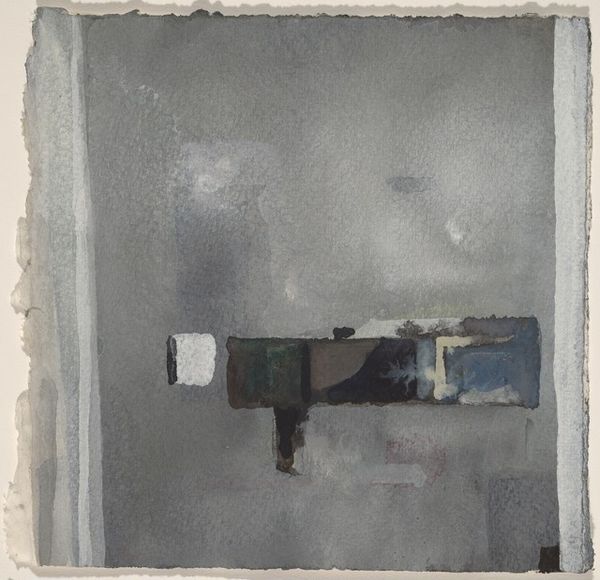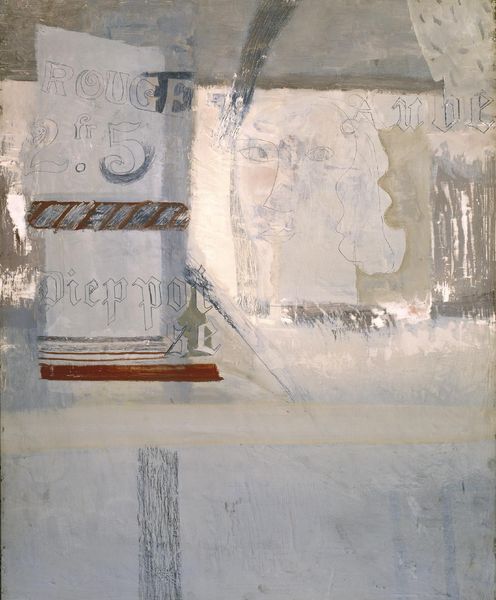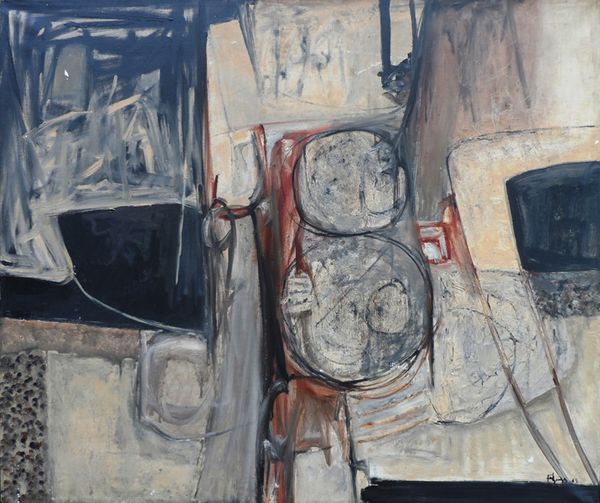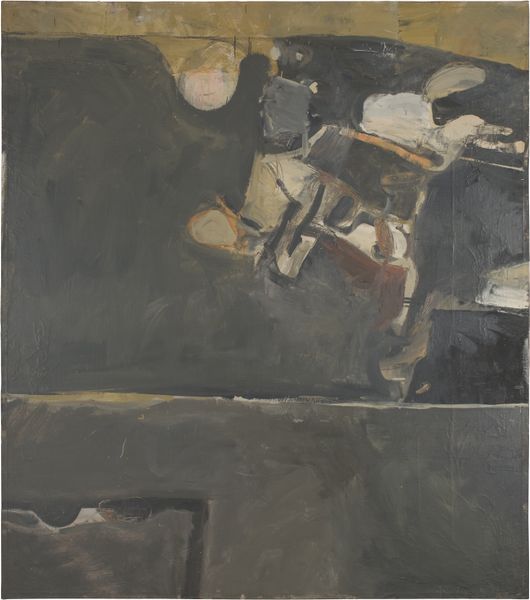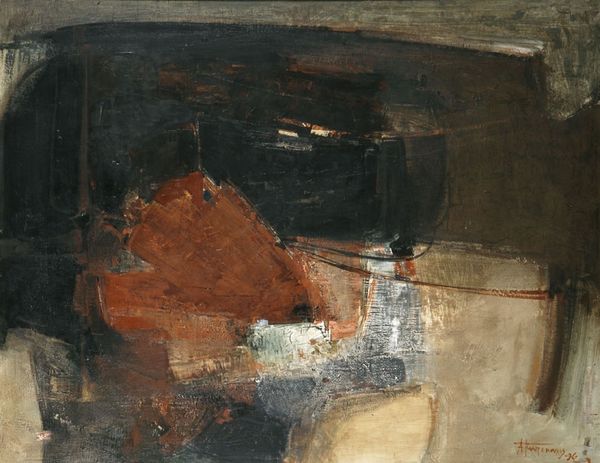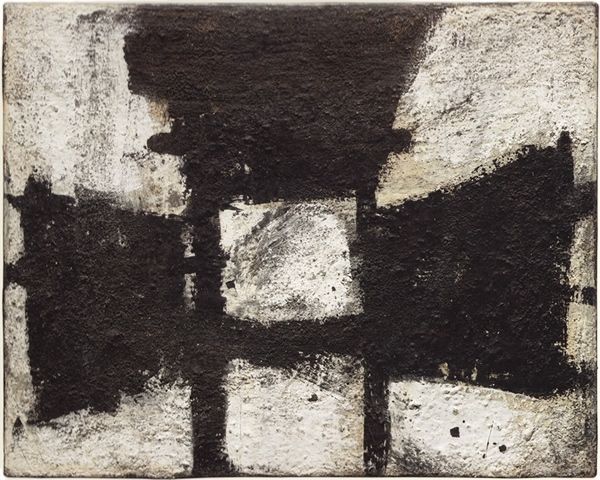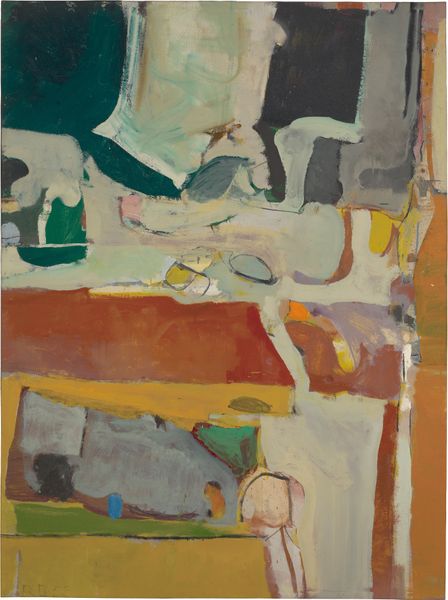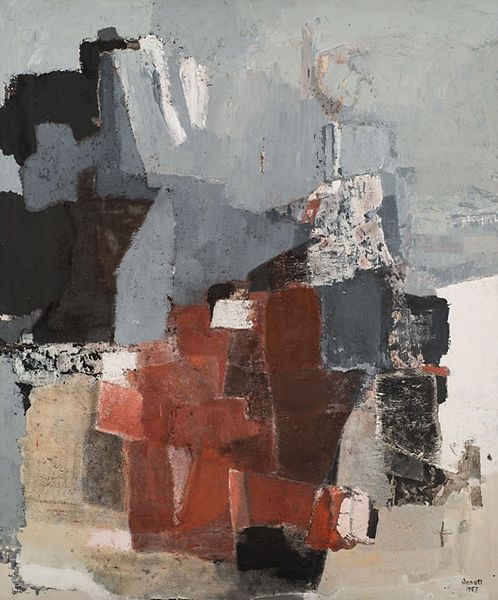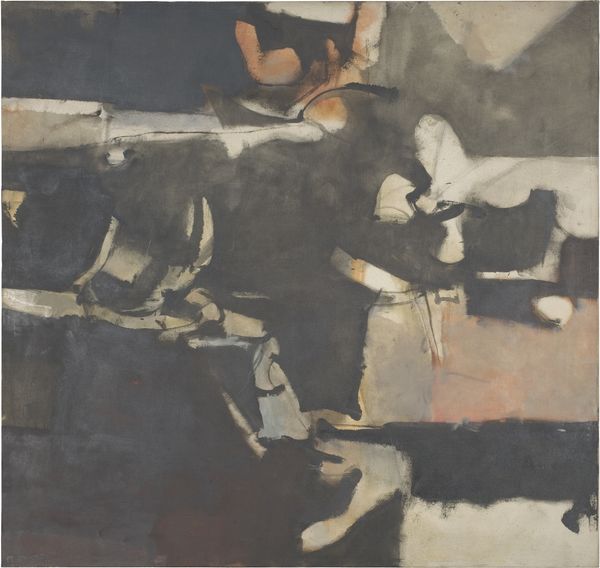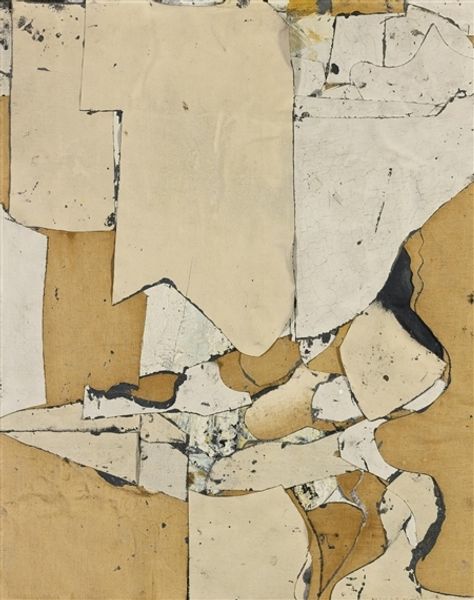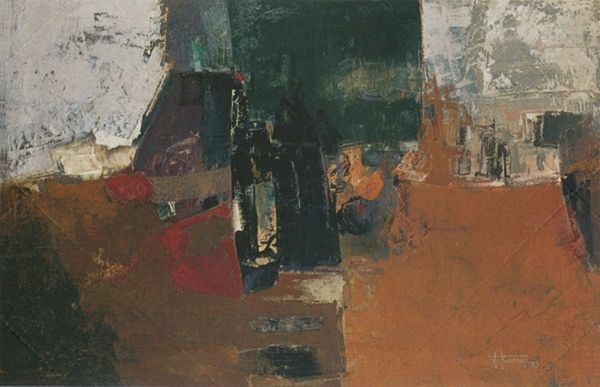
Dimensions: support: 457 x 419 mm
Copyright: © DACS 2014 | CC-BY-NC-ND 4.0 DEED, Photo: Tate
Curator: Mario Sironi's "The Syphon," held here at the Tate, is a study in contrasts and muted tones. It's a still life, yes, but one rendered with such harshness. Editor: My first impression is bleak. The grays and browns create a somber mood. It feels almost...oppressive. Curator: Sironi, deeply affected by the socio-political turmoil of his time, often infused his work with a sense of unease. Look at the newspaper collage element; it grounds the piece in a specific historical context. Editor: And the objects themselves—a syphon, a bottle—become symbols. Are they representative of a fractured society, a loss of innocence, or, perhaps, the stark realities of post-war life? Curator: Exactly. Sironi’s involvement with Fascism complicates readings of his work, but I think we can see the anxieties of modernity reflected in these fragmented forms. Editor: It's a powerful piece, even if it leaves you feeling unsettled. It's a reminder that art can be a mirror reflecting not just beauty, but also the darker aspects of our world. Curator: Indeed, Sironi's "The Syphon" compels us to confront uncomfortable truths about the past and their resonance in the present.
Comments
Join the conversation
Join millions of artists and users on Artera today and experience the ultimate creative platform.
tate 6 months ago
⋮
Sironi was associated with the first generation of Futurists who gathered in Milan before the First World War. They relished the complex experience of modern life, the speed of modern transport and the latest innovations of technology. This collage brings together typical objects that would have been found in a café at the time: a newspaper, glass and syphon. The fragmentary pieces of real newspaper carry reports from the front lines, introducing a dark counterpoint to the congenial atmosphere of the café. Gallery label, August 2004
